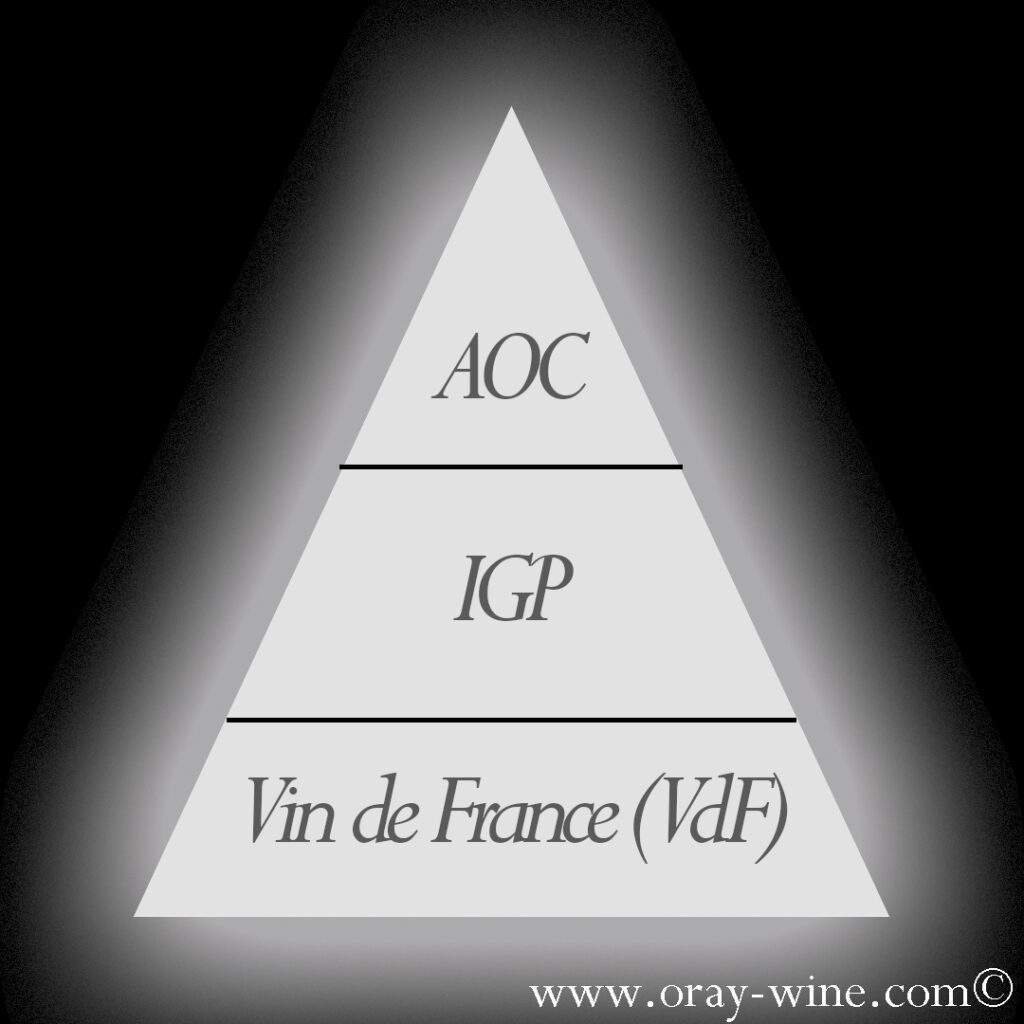Newcomers to the world of wine can sometimes be overwhelmed by the many acronyms flooding the industry. When it comes to French wines, you’ll often come across two acronyms: AOC and IGP. So what is the difference between the two.
Both are part of the French appellation quality system, but the AOC sits, theoretically, at the top of the quality pyramid (see the pyramid below), while the IGP is supposed to lie below the AOC.

This is mainly due to the fact that, in the past decades, the best wine production areas wanted to value the quality and homogeneity locally. As such, the French INAO created the French appellation system in 1935. The most recognized and sought after producing areas were granted an AOC label, while others were either ranked as IGP (split into VDQS, VQPRD and AOS at that time). Production areas and group of local producers then tried to gain access to the higher AOC designation, which was more valued by customers (although VDQS were somehow also prized at that time).
To help the system gain credibility, the INAO not only based its appellation system on the reputation of the respective wine regions at the time, but also incorporated a set of more detailed and stringent specifications and rules in local wine production. The rationale behind that was to set in stone the ancestral common practices in winemaking that were common to some areas and resulted in particular recognition by local customers (a way of protecting a local wine practice heritage).
As a consequence, in general, IGPs have larger areas of production, less stringent rules, and more degrees of freedom within their winemaking practices (higher yields allowed, more grape varieties authorized…) than AOC.
Today, the quality difference between the AOC and IGP is still theoretically true, but many talented producers choose to abandon (or not use) the AOC, whether voluntarily or not. Some famous recent examples include many talented winemakers who refused to use pesticides and were excluded from their respective AOCs. It also included winemakers who wanted to produce grapes within a biodynamic mindset but were seen as threats by their peers, who refused to award them the AOC. Another type of controversy came from estates that realized that some non-traditional grape varieties were a better fit than traditional grapes for their terroir (read more details about the notion of terroir).
This results in some great wines, such as the Domaine de la Grange des Pères, being produced under the IGP Pays de l’Hérault and not under an AOC brand. In that particular case, the wine was mainly made from the Cabernet Sauvignon grape, which was not a traditional grape locally.

Follow me on my Social Media
Wine is a gourmet treasure, do not abuse alcohol!
None of this content has been sponsored
I did not receive any gifts or free samples that could be related to this article